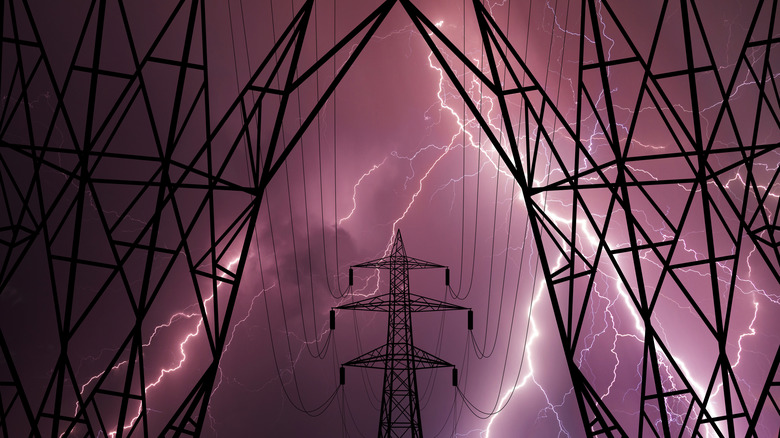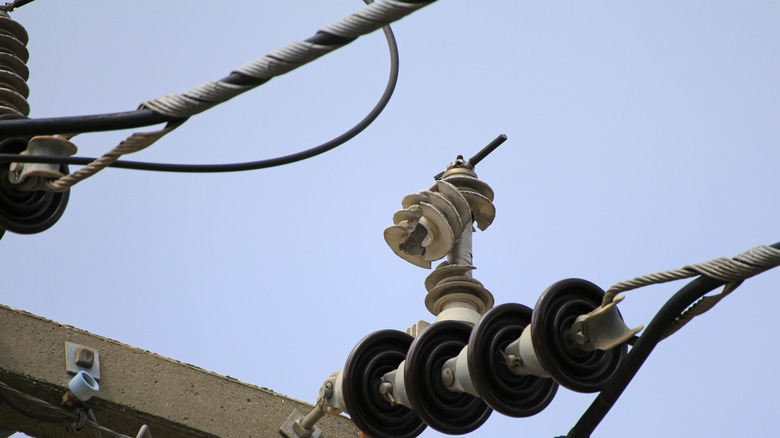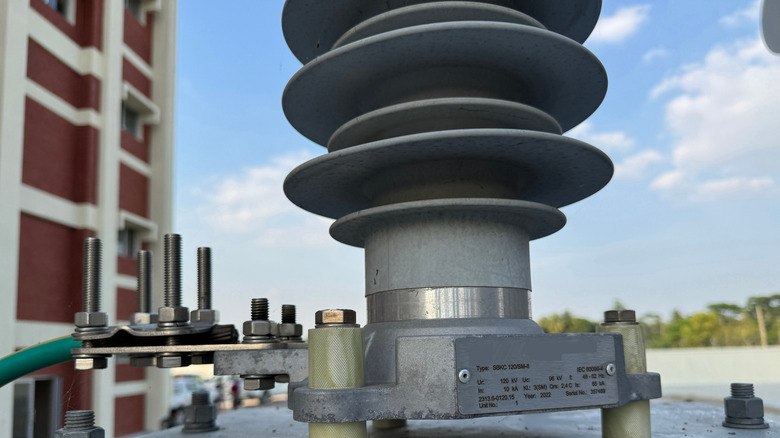Why Do Power Lines Have Metal Springs? Here's What They're For
If you have paid close attention to power lines, you might have noticed metal spring-like structures close to the transmission towers. These spring-like structures are known as lightning arresters, and they ensure smooth power delivery when a power line is struck by lightning.
You may have noticed how using very long wires results in lower power delivery to the end appliance. The power from the source is diminished after traveling a greater distance, but imagine how much power would be lost in transmitting electricity over several miles through power lines if not done right. To avoid the significant power loss, power lines transmit electricity at much higher voltages than needed for most household appliances. However, this approach can become a safety hazard for people and structures. Power lines are placed on high transmission towers to avoid contact and voltage-related damage to nearby structures, which also helps you avoid hearing that annoying buzzing sound.
However, higher tower placement makes power lines more susceptible to lightning strikes. Therefore, lightning arresters have become an important part of power lines to mitigate the risks of lightning strikes.
A lightning arrester does not stop lightning
Power lines in the U.S. operate anywhere between 69 kV and 765 kV, depending on the grid system they belong to. The voltage might seem like a lot (and it definitely is), unless you compare it to a typical lightning flash, which is about 300 million volts. While power lines are designed to operate under high voltage conditions, a lightning strike is a different beast altogether. If you have witnessed the wrath of a lightning strike on a car or tree, you probably know how dangerous it can be. When lightning strikes a power line, it can cause a massive surge in energy. The energy from a lightning strike can cause significant damage to the electrical equipment in the power line, such as transformers, if not handled by the lightning arrester.
Unlike their name, lightning arresters don't hold or stop lightning; rather, they divert the lightning to the ground through a different set of cables (not involved in electricity transmission). The lightning rods used to protect houses from lightning strikes work on a similar principle.
Working of a lightning arrester
Remember how a lightning arrester needs to detect power surges and quickly divert the lightning before it causes any damage? Considering how lightning fast lightning is, the arresters need to be equally quick to work properly. Rather than relying on sensors or other fancy tech, lightning arresters use an ingenious technology.
The lightning arrester is made up of multiple metal oxide varistor (MOV) disks. The metal oxide varistor is a semiconductor that can act as both a conductor and an insulator of electricity depending on the applied voltage. During normal operations, the MOV disks act as an insulator, meaning no current passes through them. However, when lightning strikes, these disks turn into a conductor due to the high applied voltage. Since the MOV disk can change its conduction properties as soon as it detects a power surge, the technology is perfect for quickly switching on during a lightning strike. All the current from the lightning passes through the lightning arrester to the ground, protecting the power line in the process. When the surge has been dissipated, the MOV disks return to being an insulator, and the power line operates as intended.


